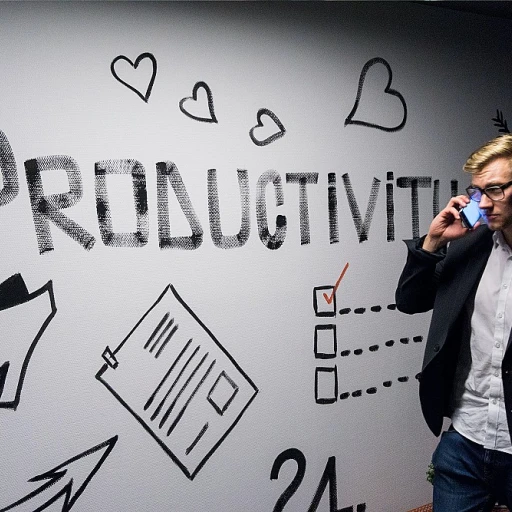Understanding the Role of HR in Shaping Culture
The Critical Function of HR in Cultivating Organizational Culture
In today's dynamic business environment, the role of Human Resources (HR) in shaping organizational culture cannot be overstated. HR professionals are the cornerstone of fostering a workplace environment that aligns with the company’s mission and values. Their influence extends beyond routine employee management and delves deep into creating a culture where innovation and engagement thrive. A fundamental aspect of HR's role is to act as a bridge between leadership and employees. By facilitating open communication channels, HR ensures that the organizational values resonate throughout the company. This communication doesn’t simply involve the dissemination of information but also incorporates feedback loops that empower employees to voice their insights and concerns, contributing to a culture of transparency and trust. Furthermore, HR strategies must embrace not just the recruitment of individuals who fit the cultural mold of the organization but also the ongoing development of employees to maintain consistent alignment with evolving cultural expectations. This involves implementing strategic onboarding and continuous learning opportunities that reinforce the core values of the company. As we explore the intersection of company values and employee experience in the next section, it's crucial to acknowledge that the foundation of any successful culture change begins with the initiatives led by HR. Unlocking secrets of effective HR management practices offers valuable insights into the strategies that HR can employ to effectively cultivate and sustain a vibrant organizational culture. The proactive engagement of HR professionals lays the groundwork for a thriving workplace environment, setting the stage for influential leadership and innovative strategies that will be discussed in the further sections.The Impact of Company Values on Employee Experience
Company Values as the Bedrock of a Positive Employee Experience
To truly grasp the profound effects of company values on the employee experience, it's essential to reflect on how these values serve as the guiding principles that shape day-to-day interactions within the organization. When values are clearly communicated and aligned with the company's mission and vision, they serve as a compass for decision-making, fostering a sense of belonging among employees. Organizations with strong values that they actively live by often see increased employee engagement and satisfaction. This is because employees feel more connected to their work, knowing that their actions contribute to a greater purpose. It’s not just about having values written in a handbook, but about how these are manifested in real, tangible ways within the company culture. For instance, a company that promotes innovation as a core value might invest in regular training and provide opportunities for employees to work on creative projects. This approach not only reinforces the value but also enhances the employee experience by empowering workers to contribute their ideas. The role of human resources in this scenario is crucial. HR professionals must ensure that these values are consistently infused into every HR process - from recruitment and onboarding to performance evaluations and professional development programs. Integrating values into these processes helps maintain consistency and ensures that they are lived by every team member across the organization. Furthermore, HR leaders need to be proactive in addressing any discrepancies between stated values and the actual employee experience. By creating feedback loops and engaging in continuous dialogue with employees, HR can identify misalignments and work towards realigning them. For more insights into how HR can effectively align their talent management practices with core company values, check out the comprehensive guide on mastering talent management in HR for business success.Leadership's Influence on Workplace Culture
Leadership's Role in Nurturing Workplace Culture
In our discussion about enhancing HR management for a vibrant organizational culture, one cannot overlook the substantial role that leadership plays in shaping and nurturing workplace culture. The leaders of an organization are more than just figureheads; they are the embodiment of the company's values and mission. Their actions and decisions set the tone for how the day-to-day operations are perceived and experienced by employees. Leadership influence goes beyond strategic planning and extends into setting cultural norms within the workplace. When leaders actively model the behavior they wish to see, they create an environment where employees feel encouraged to embody the same values and attitudes. This alignment between leadership actions and organizational values not only reinforces a positive culture but also strengthens the trust and respect between management and employees. Communication is another essential aspect where leadership plays a pivotal role. Transparency in communication helps demystify organizational objectives and goals, ensuring everyone is on the same page. Leaders who openly share information foster a culture of openness and inclusivity, making employees feel valued and part of the bigger picture. Moreover, effective leaders prioritize feedback and demonstrate a willingness to listen to their teams. This approach not only improves morale but can also lead to actionable insights that contribute to cultural enhancements. Creating a feedback loop where employees feel safe to express their opinions can act as a catalyst for positive change, which is central to a dynamic organizational culture. Furthermore, it's imperative for leaders to be adaptable and conscious of the evolving nature of workplace culture. The ability to recognize when changes are needed and to lead those changes effectively is a hallmark of influential leadership. These qualities are crucial for sustaining not just efficiency but a thriving cultural environment over the long term. In summary, leadership's involvement is a key driver in establishing and maintaining a healthy, vibrant workplace culture. As we further explore strategies for improving organizational culture in subsequent sections, remember that leadership is at the heart of these initiatives. It is their vision and actions that lay the groundwork for lasting cultural transformation.Strategies for Improving Organizational Culture
Implementing Effective Communication Channels
One of the key strategies for improving organizational culture is establishing clear and open communication channels. Effective communication fosters transparency, builds trust, and encourages collaboration among team members. When employees feel heard and understood, they are more likely to engage positively with the company's culture. Regular feedback sessions, open-door policies, and digital communication platforms can help facilitate this process.
Fostering Inclusivity and Diversity
Creating a culture that values inclusivity and diversity is essential for a thriving workplace environment. By embracing different perspectives and backgrounds, organizations can drive innovation and creativity. Implementing diversity training programs and promoting inclusive hiring practices can help build a more welcoming and dynamic organizational culture.
Aligning Company Values with Daily Practices
As discussed in the section on company values, aligning these values with daily operations is crucial for cultural improvement. This involves ensuring that every aspect of the business, from decision-making to employee interactions, reflects the core values of the organization. Leaders should model these values and integrate them into performance evaluations and reward systems to reinforce their importance.
Encouraging Leadership Development
Leadership plays a pivotal role in shaping workplace culture, as explored in the leadership influence section. Investing in leadership development programs can equip managers with the skills needed to inspire and motivate their teams effectively. By fostering strong leadership, organizations can create a positive cultural environment that supports growth and development.
Measuring and Monitoring Cultural Progress
To ensure continuous improvement, it's important to regularly measure and monitor the progress of cultural initiatives. This can be achieved through employee surveys, feedback mechanisms, and cultural audits. By analyzing this data, organizations can identify areas for improvement and adjust their strategies accordingly, ensuring that the culture remains vibrant and aligned with the company's goals.








